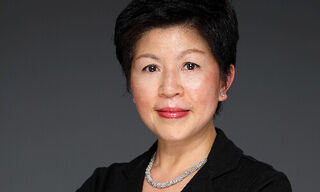UBS Loses Crown in First Brands Scandal
Jefferies has overtaken UBS as the bank most deeply entangled in the First Brands bankruptcy. But with half a billion dollars at stake, UBS remains a close second, with no other major creditor identified so far.
The collapse of US auto-parts supplier First Brands Group is rewriting the leaderboard of blame. A detailed investigation in a «Wall Street Journal» report places Jefferies at the heart of the company’s collapse – not only as a lender but as one of the architects of its complex and ultimately self-defeating financing web.
According to the report, Jefferies acted simultaneously as investment banker, arranger, and fund manager. Its affiliated fund, Point Bonita Capital, held around $715 million in First Brands receivables. «Jefferies had roughly $45 million of Point Bonita exposure while the fund’s other investors including BlackRock and Morgan Stanley’s asset-management arm held the rest», the report said.
In many cases, investor money flowed first through First Brands before being passed on to investors again – effectively turning what had been sold as receivables factoring into short-term loans. The WSJ notes that Jefferies’ marketing materials did not fully spell out this risk.
$2 Billion in Off-Balance Sheet Liabilities
When First Brands stopped servicing payments to Jefferies mid-September and filed for Chapter 11 protection in late September, court-appointed advisers uncovered more than $2 billion in off-balance sheet liabilities, backed by only a fraction of genuine receivables. The imbalance revealed how aggressively the company had leveraged its working-capital programs – and how poorly those exposures were understood by its financiers.
UBS, whose funds were previously seen as the largest single creditor, now moves to second place. Its O’Connor and Hedge Fund Solutions units hold roughly $500 million in First Brands-linked claims. The Swiss bank’s exposure stems from its Working Capital Finance Strategy, a series of supply-chain and trade-finance funds that were marketed to investors as short-duration, asset-backed opportunities. Unlike Jefferies, UBS did apparently not arrange or syndicate the underlying transactions but invested through external platforms.
Santander Implied With $77 Million
Also mentioned in the WSJ account is Banco Santander, which extended around $77 million in receivables financing to First Brands. While material, that exposure places the Spanish lender a clear step below Jefferies and UBS in scale – making the two Anglo-Swiss houses the dominant names in the case.
For Jefferies, the reputational and legal risks now loom largest. Its dual role as adviser and fund sponsor will likely draw scrutiny from investors and regulators alike. UBS, however, remains its most substantial fellow-traveler.



























